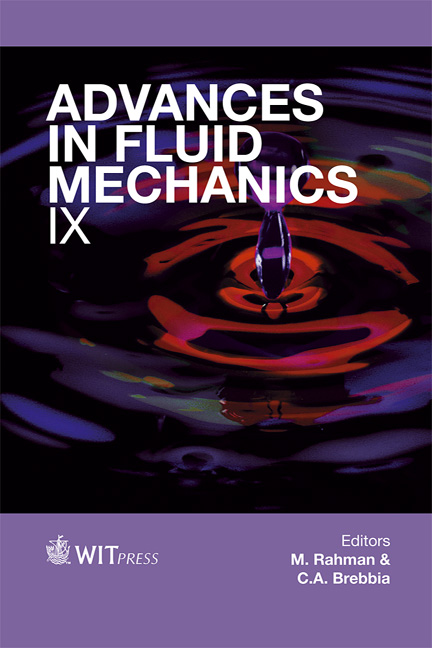Acoustic Frequency For Bubble Size Correlation Using Acoustic Emissions
Price
Free (open access)
Transaction
Volume
74
Pages
11
Page Range
415 - 425
Published
2012
Size
676 kb
Paper DOI
10.2495/AFM120371
Copyright
WIT Press
Author(s)
S. Husin, A. Addali & D. Mba
Abstract
In this study, a correlation between acoustic frequency and the bubble size of a single bubble burst at the free surface has been demonstrated. Bubble burst was used as it is an acoustically noisy process, independent parameter and potential source of AE in a liquid medium. An AE transducer was used to record sound as the bubble bursts at the free surface. The acoustic data were then processed to extract the bursting frequency associated with the bubble size. The frequency of the acoustic bursting has been shown to be related to the size of the bubble. The effects of liquid viscosity on acoustically determined bubble size has also been demonstrated. Keywords: Acoustic Emission (AE), gas bubble, gas bubble burst, frequency spectra. 1 Introduction Bubble burst characteristics-acoustic frequency can be used as a basis for interpreting bubble properties, particularly bubble size. Sound pressure detection from a single bubble burst at free surface is an important parameter for estimating bubble and liquid properties where the process is independent from external forces. Bubble bursting by its nature at a free surface is deemed useful for empirical parameter which is more accurate and detectable with an AE transducer. However, study of the acoustic frequency of a single bubble burst at free surface using AE technology is never attempted for bubble properties’ determination, particularly for bubble sizing. This proposed technique is passive, can be employed either intrusively or non-invasively and is a rapid measurement technique. Furthermore, the robust acoustic transducer is more practical in
Keywords
Acoustic Emission (AE), gas bubble, gas bubble burst, frequency spectra.





